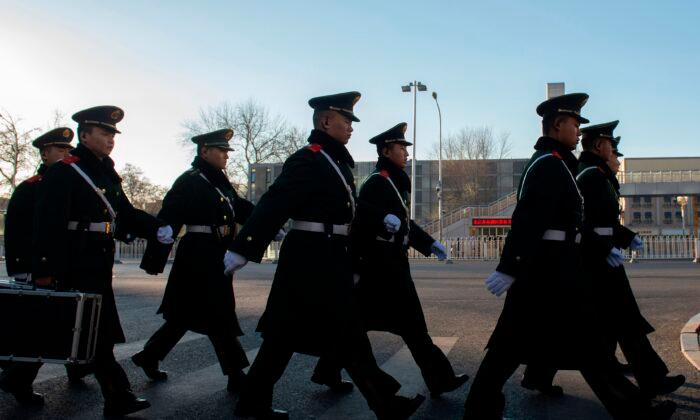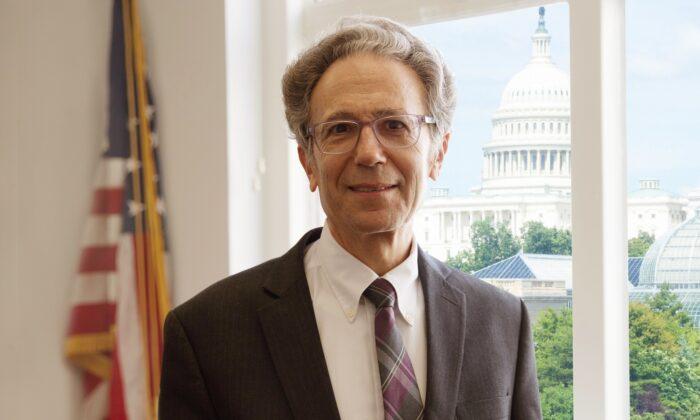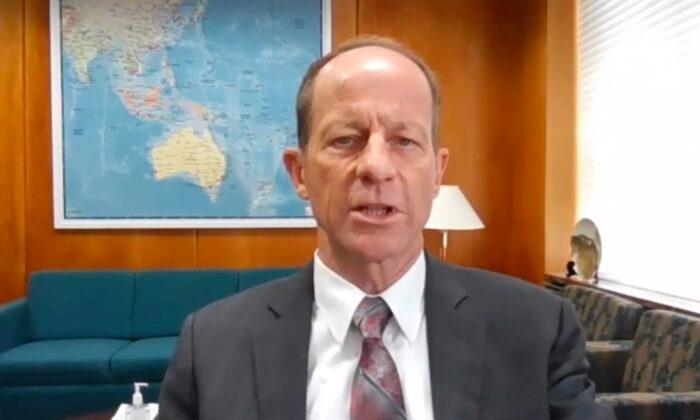Over the last 18 months, the number of verified Twitter accounts linked to Chinese regime officials has exploded, according to researchers tracking Chinese data.
The irony, they point out, is that despite the ban in China on Twitter, Facebook, YouTube, and Google, the Chinese Communist Party (CCP) uses these platforms itself to attempt to influence and manipulate foreign audiences.
Data coming out of China is famously at risk of containing intentional inaccuracies, incomplete information, outright omissions, and blatant exaggeration of results in any area related to China’s growth and development.
‘Unearth It, Systematize It, Analyze It’
“Nobody would call China transparent,” Walter Lohman, director of the Asian Studies Center at The Heritage Foundation, said. In fact, “we’re still trying to figure out if they’re going to have their annual leadership meeting at Beidaihe. Maybe they’ve already had it and nobody knows.”Fortunately, however, there are “fine researchers outside of China” who take on the challenge of finding and analyzing reliable facts from the mountain of official sources churning out Chinese data, Lohman said. The foundation’s China transparency initiative supports a research enterprise around the world that is “trying to unearth it, systematize it, analyze it.” By bringing all Chinese-related research together in one place, and calling attention to it, the goal is to expose the behavior of the CCP.
Perhaps no issue highlights the need to find accurate and comprehensive data as much as the control of the Mekong River. Future Directions International (FDI), an independent Australian research institute, says the Mekong is “one of the most threatened rivers in the world.”
That threat, it says, is largely due to the “rapid increase” in the number of large operational hydro-power dams, mostly in China, that follow the river’s course.
The dams give China the power to hold back the waters of the Mekong from the 250 million people in six Southeast Asian countries who live in its lower basin, and the 80 percent of those who depend on it “for their food or livelihoods,” FDI said.
Regan Kwan, a research associate with the Southeast Asia Program at the Stimson Center, said he and his colleagues have used sophisticated imaging and other technologies to prove that “during a time of severe drought in the lower Mekong basin in 2019 ... China’s dams blocked or restricted more water than ever as downstream countries suffered.” This was despite the fact that from April 2019 to November 2019, China’s portion of the upper Mekong received uncommonly high levels of precipitation, levels that were sufficient enough not only to have prevented any level of drought, but to have kept Southeast Asian countries downstream at water levels above their normal average, he said.
Kwan indicated that China is treats the issue as a state secret, refusing to share information even with downstream countries that are directly impacted by Beijing’s water policies and actions.
Promoting Russia and Iran
In tracking and analyzing over 600 Twitter accounts connected to Chinese embassies, officials, consulates, state media, and ambassadors themselves, Zack Cooper of the Alliance for Securing Democracy at the German Marshall Fund said that he is finding that Chinese messaging is overlapping with and amplifying messaging coming out of Russia and Iran.“Top stories over the last week were all about Russia,” Cooper said.
“In many cases, China, Russia, and Iran messaging overlap. It’s not really surprising. China has been pushing messaging that Russia is first to deliver the vaccine. Why? To show that autocratic governments theoretically can be effective at dealing with a pandemic, and especially to target that to a U.S.-based audience.
“What we see are government accounts retweeting conspiracy theories that actually came from Iran.”
One of those “crazy conspiracy theories” is that COVID-19 started at Fort Detrick in the United States, he said.
Chinese government ministries are now in “active disinformation” mode on Twitter, Facebook, and elsewhere.
Belt and Road Project Funding
“Often government agencies that have taken on this debt really have no idea of the specifics of the transaction, I mean the loan terms, the interest rate, et cetera,” said Siddhartha Ghose, an associate director of the Transparent Development Footprints program at AidData, referring to projects that fall within the scope of China’s vast set of it has sponsored around the world under the umbrella of its Belt and Road Initiative (BRI), ostensibly a program to promote regional and global “connectivity.”BRI has come under criticism for leading countries into debt traps and for the often completely opaque financing terms under which projects are developed.
“We have come to realize the sophistication of the financial arrangements that China is getting into, private-public partnerships, master loan agreements,” Ghose said.
“We don’t really have an understanding of how all of these big dollars coming out of China are actually hitting the ground.”
It’s important to provide transparent data to policymakers, he said, in place of its absence from the Chinese side of the equation, and “to answer one central question: Who is funding what, where, to what effect ... in China’s financial overtures to garner influence with other countries?”
“I was surprised to find in speaking with officials in countries like Pakistan, Bangladesh, and Sri Lanka that oftentimes the officials in the Ministry of Energy have no clue about the actual terms that the ministry is signing on to” for hydro-power projects financed by China, he said.
They also “have no clue about the competitive bidding process. ... I have seen this across the board.”




Friends Read Free